Even when a teacher has set clear behavior expectations, there will still be students who struggle with working independently. They might get easily distracted, have trouble working at an appropriate noise level, and in turn, disrupt others around them. Here is one particular classroom management strategy for keeping students on task during independent work.
To minimize behavior problems, give students the coveted responsibility of helping to monitor the class. The strategy is effective because it puts some of the power in the students’ hands. It encourages leadership and responsibility, and therefore gives the kids more buy-in to exhibit positive behavior.
When the class is working independently, there can be a special job that I like to call the “On-Task Manager.”
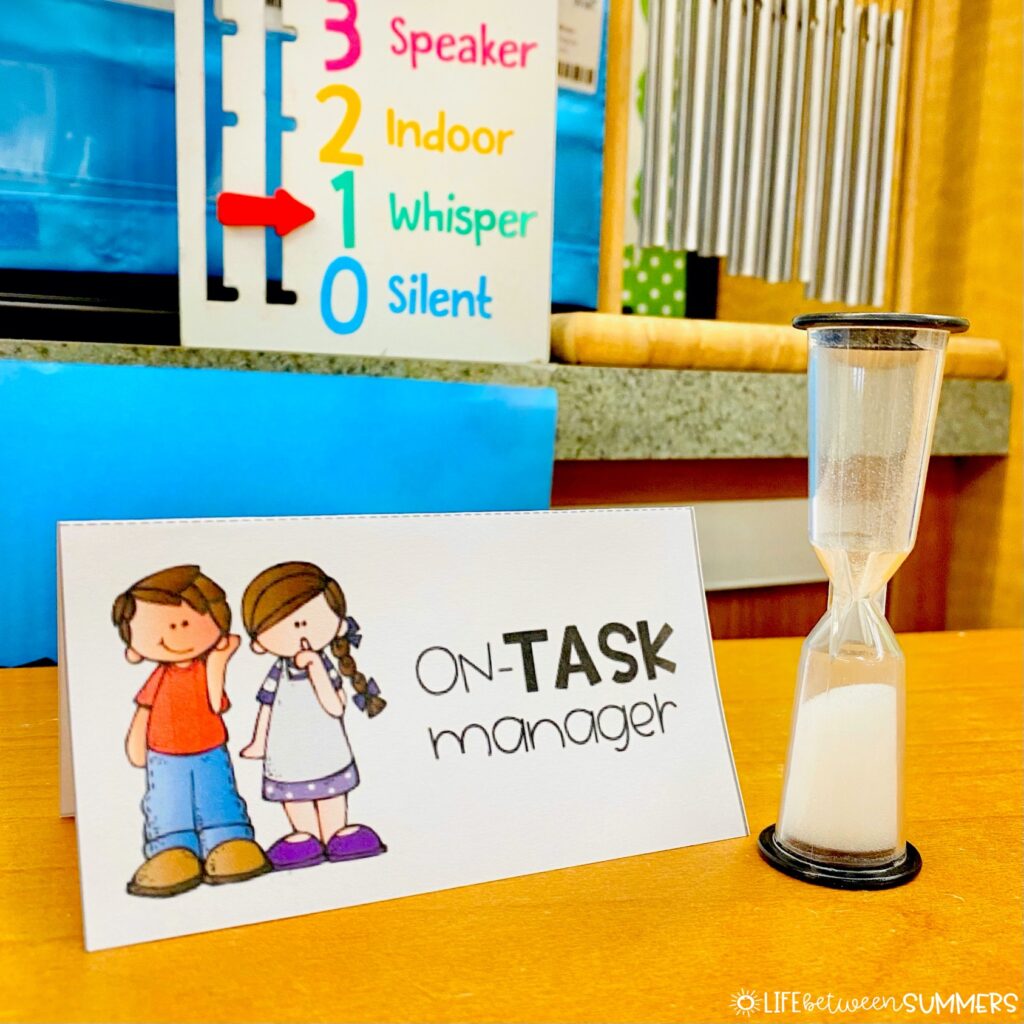
As a variation, you could also call it “The Quiet Monitor,” or even “The Quiet Queen” and “The Quiet King.”
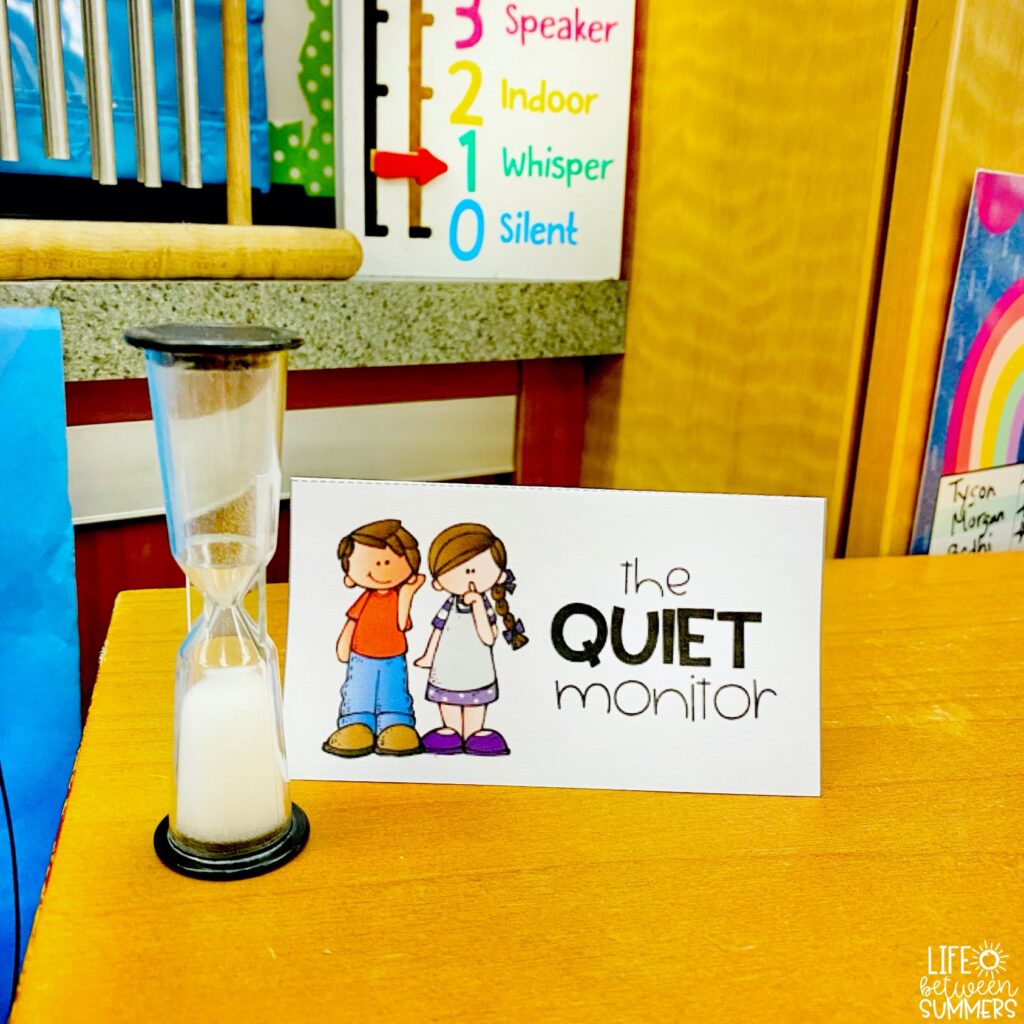
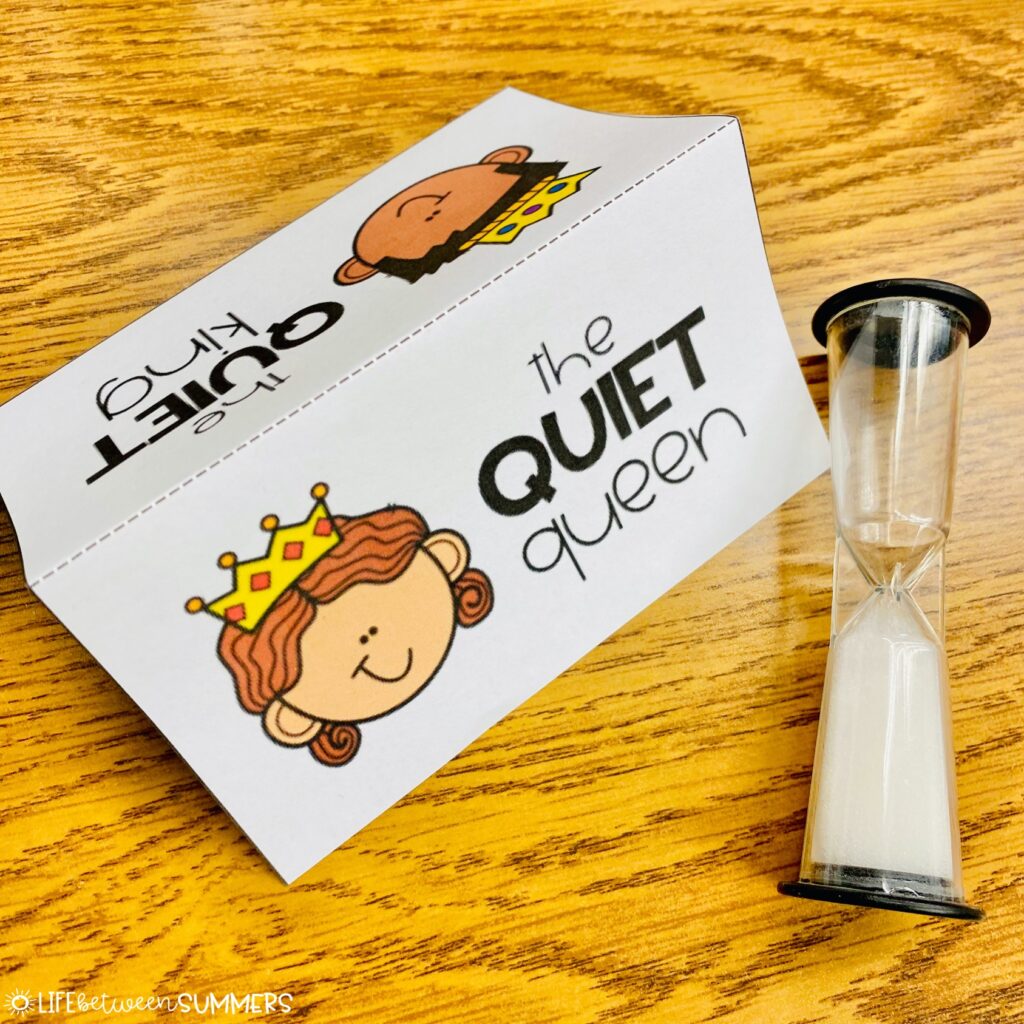
How does it work?
The strategy is very simple to implement. Put the place card and a sand timer at a designated spot in the classroom. The front of the room usually works best. You could use a regular timer, but a sand timer is ideal because it is silent and therefore less disruptive. I’ve found that a 3 minute timer is a good amount of time, but you could use whatever you prefer.
If you’ve chosen to use the Quiet Queen/King title, you could give that special student the royal treatment. Put a paper or plastic crown next to the place card and sand timer.
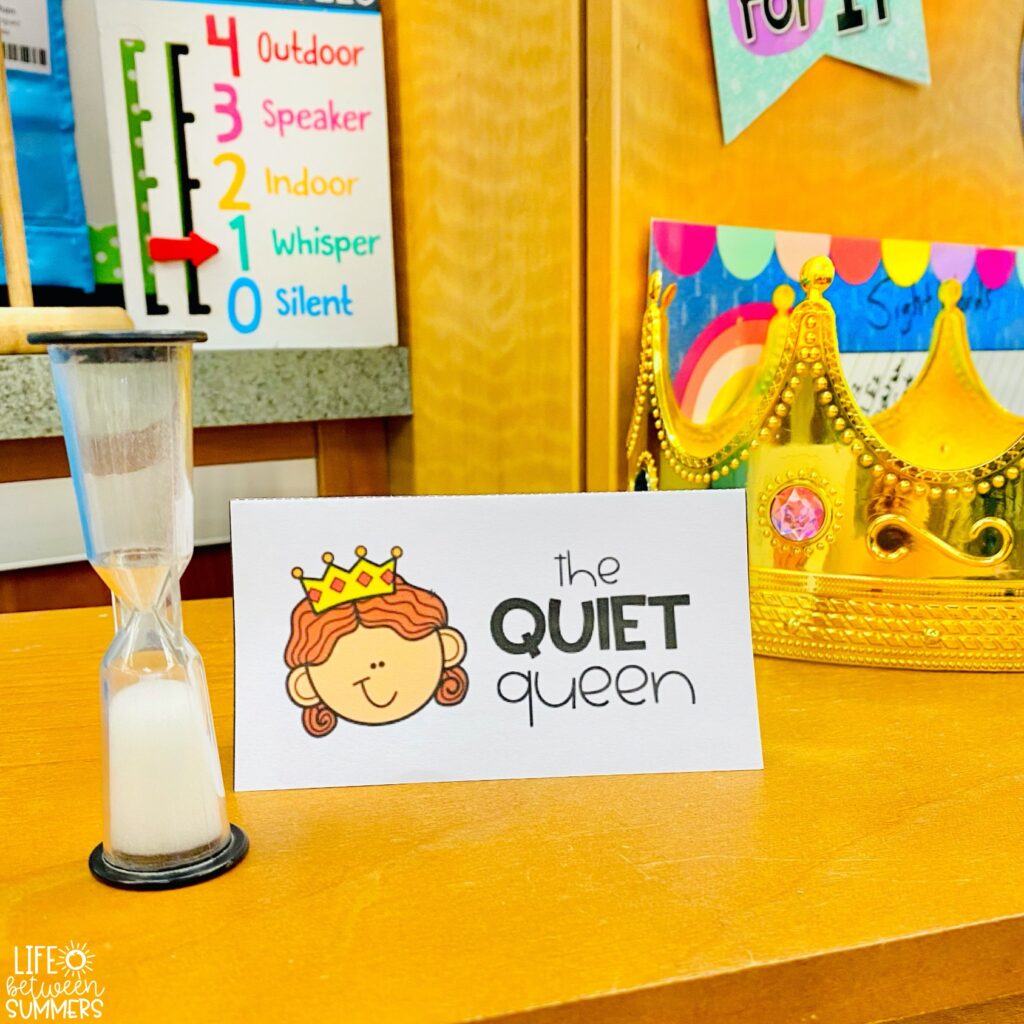
Once students begin working independently at their centers, find a student who starts working quietly right away. Announce that student as the first On-Task Manager (or Quiet Monitor/Queen/King). He or she gets to stand at the front of the room and flip over the sand timer.
For the queen/king option, the student can choose to face the place card forward to have it face the way they’d like. A boy could face the “Quiet King” side forward, for example. The student can also put the crown on their head if they want to.
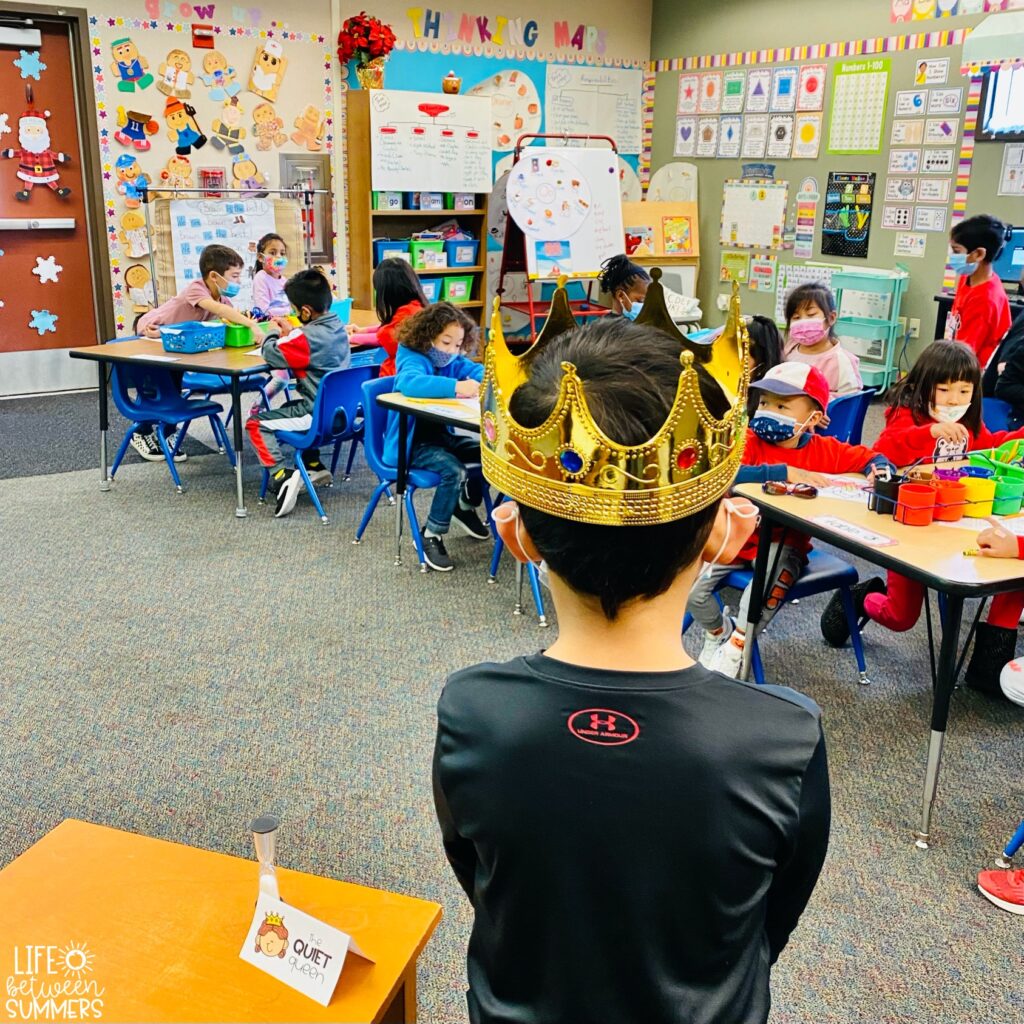
This student’s special job is to “supervise” the class to see who is doing the best job of working quietly and staying on task. When the timer is up, they get to go and tap a classmate on the shoulder that they think was doing the best job. That student then becomes the new supervisor, and the previous student goes back to do their work. This rotation of managers can repeat until the end of independent work time.
While it does take away a few minutes of work time for each student who has a turn to be the manager, the trade-off is worth it. A short little reward/brain break is a good investment for having all those students be on task the rest of the time.
Set the Expectations
Here are a few suggestions for rules to share with your students before putting it all into action:
- There should be no verbal exchange when the monitor taps someone on the shoulder and they trade places (the “switch” shouldn’t be drawing attention and disrupting the rest of the class). It’s merely a tap on the shoulder and they walk quietly to their spots- that’s it. You could have a couple students role play to model for the rest of the class how it needs to be done. If there are students who do start conversing during the switch, you could say that they won’t be allowed to be chosen as the supervisor for the rest of the time.
- Which leads to the next thing- the same student can be chosen more than once. But kids shouldn’t be deliberately selecting the same person (or picking their friends) over and over. Tell them if you notice anyone not choosing fairly, they will lose the privilege of getting to be the supervisor next time.
- If anyone just keeps watching the manager instead of doing their work, then they won’t be picked.
- The designated student should really be watching carefully to see who is truly ON TASK. If someone is sitting quietly but not actually working, then they should not be chosen.
Don’t Over-Use It
You could potentially have an On-Task Manager (or Quiet Monitor, or Quiet Queen/King) on a daily basis. But if you really want to maximize its novelty and effectiveness, this management strategy is best used intermittently. You could wait to bust it out out only during certain times when you really need it.
For example, it’s great to save for when kids start having that “spring fever” right before summer vacation. Or for times when you need your kids to work more quietly than usual, such as when a class is testing next door. And let’s be real, it’s also a handy little trick to keep in your back pocket if you ever have a formal observation during small group time.
Where can I get the place cards?
If you plan on implementing this in your class and would like to use the same place cards pictured above, they are available in my web shop and TPT.
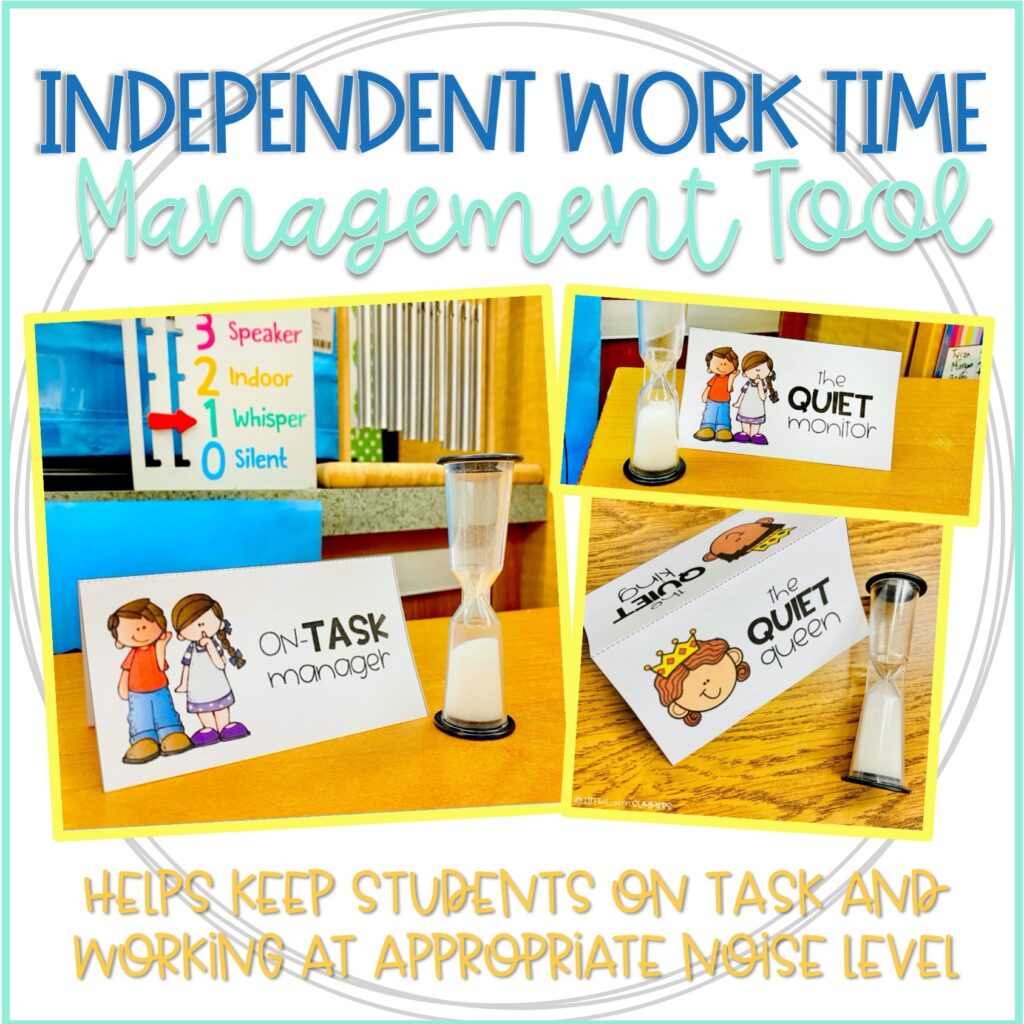
You can also get the place cards emailed to you for FREE when signing up for my email list. Click here and I’d be happy to send them your way!
Additional Help
If you’d like more classroom management ideas, check out my tips for keeping the rest of the class on task during centers. I’ve also shared some favorite tricks to help with a chatty class and other common behaviors.
Hopefully you might be able to find a helpful idea (or a few)! When students are able to do a better job of working independently, it makes it so much easier for you to be able to do your job more effectively too.


Leave a Reply
You must be logged in to post a comment.